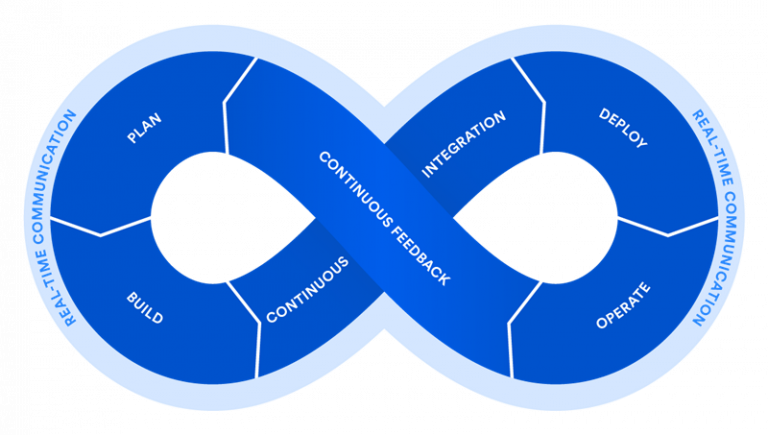There are several strategic steps to deploy an enterprise DevOps strategy for agile administration. Culturally, DevOps methodologies can bring people, products, and processes together across development and operations teams. Many tech experts believe that DevOps is driving the future of UX design. At the same time, DevOps has already had a major impact on industries like software development, mobile applications, and web design.
However, when you are scaling DevOps to larger, highly regulated enterprises, you may face some unique challenges. You may encounter legacy systems and manual workflows that are slower to adopt due to their older age and large organizational size. Fortunately, there are several steps that you can follow to implement an enterprise DevOps plan to optimize your deployments. Read on to discover how to deploy an enterprise DevOps strategy for agile administration.
Contents
Plan For Enterprise Readiness
First, you need to plan for enterprise readiness when deploying an enterprise DevOps strategy for agile teams. For the highest chance of success, you should designate a program sponsor from the highest level of your company to plan your DevOps approach. Typically, this will be the CEO, CIO, or business-driven line of your organization. Business, development, operations, and security participation is imperative for agile software delivery. Design thinking can help lead your team to scale your current DevOps methods to the enterprise level. It is essential to plan for enterprise readiness across your teams to successfully implement a DevOps strategy.
Emphasize Agile Principles
Once you have planned for enterprise readiness, you need to emphasize agile principles for your software team. Understanding these agile principles is essential to increase your development efficiency, boosting collaboration, and even finding a lucrative job in the tech field. While agile principles and DevOps strategies are two different methodologies, they generally complement each other well. Ideally, pairing agile and DevOps practices should result in minimized average development time.
Moreover, it will remove bugs, errors, and defects from your written code, further optimizing the deployment process. Typically, agile principles focus on iterative software delivery. Therefore, when you utilize continuous integration (CI) and continuous deployment (CD), for each iteration, you can speed up the time to market. Whichever form of integration you select, strategic planning can largely improve the agility of your DevOps strategy.
Integrate A Docker Registry
After emphasizing agile principles in your enterprise team, you need to integrate a Docker registry. For example, JFrog offers an end-to-end solution to cover the full lifecycle of your Docker registry. This allows you to manage vulnerability analyses, development, artifact flow control, and distribution. By integrating an artifactory Docker registry, you can utilize a local repository to share Docker images across your organization with advanced access control.
In addition, Docker registries facilitate fully automated and optimized software delivery with REST API and JFrog CLI. Through cloud-based providers, artifactory Docker registries offer massively scalable and reliable storage for your enterprise management. You need to integrate a Docker registry to increase agility in your enterprise DevOps strategy.
Focus On Automated Testing Procedures
In addition, you need to focus on automated testing procedures to successfully implement your DevOps strategy for your agile enterprise team. The importance of software testing is critical in the digital era. Harnessing the power of automated technology, you can largely enhance the efficiency, reliability, and accuracy of testing procedures. Automated testing services live in public clouds. Typically, they are provided by the target public cloud platform or third-party cloud providers.
Alternatively, they might be delivered from some on-premises systems. It is imperative that your team can create automated test scripts that are coupled to applications to regulate when a program moves to the staging and deployment phases. You should also be able to provide test data for application testing.
Communicate Across Your Organization
Furthermore, you need to communicate across your organization to deploy your enterprise DevOps strategy in your agile administration. You need to communicate with your organization why you are making these changes and what the overall goal is. There are many ways that you can translate these concepts. For instance, you can create weekly newsletters, posters diagramming key ideas, online communication platforms, and electronic discussion forums for people to share their thoughts.
With a constant stream of information, you are always providing your administration with learning opportunities. Thus, it is essential to communicate across your organization to deploy your enterprise DevOps strategy.
Final Words
There are several comprehensive steps you need to follow to deploy an enterprise DevOps strategy for agile administration. First, you need to plan for enterprise readiness to orient your team with the new DevOps strategy. Next, be sure to emphasize agile principles to optimize efficiency in your software development pipeline. Then, integrate a Docker registry to manage development and enable automation.
In addition, you also need to focus on automated testing procedures to regulate your programs’ movement through the pipeline. Finally, communicate across your organization to promote continuous learning and common goals. Consider the steps mentioned above to learn about how to deploy an enterprise DevOps strategy for agile administration.

